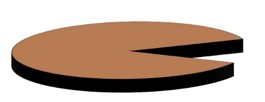Transition Energy For a Polar Quantum Disc with Conical Disclination in Parabolic Confining Electric Potential
DOI:
https://doi.org/10.61343/jcm.v1i02.21Keywords:
Transition energy, Conical disclination, Parabolic potentials, Quantum discAbstract
The Transition energy of an electron for a polar quantum disc with conical disclination is investigated theoretically. For charge carrier confinement, we consider the infinite polar square well potential (IPSW), and parabolic potential (PP). The disclination in the system is characterized by the kink parameter k. The energy levels of the system were calculated using the Schrödinger equation with the effective mass approximation. Our study reveals that the transition energy decreases as the kink parameter k increases.
References
R. Ashoori, “Electrons in artificial atoms,” Nature 379, 413–419 (1996).
S. M. Reimann and M. Manninen, “Electronic structure of quantum dots,” Reviews of modern physics 74, 1283 (2002).
Moletlanyi Tshipa and Monkami Masale, “Optical transition rates in a cylindrical quantum wire with a parabolic and inverse parabolic electric confining potential in a magnetic field”, Optical and Quantum Electronics, 53:1-13, 2021.
S. Kumar D, J. Kumar B, and M. Matt, “Quantum nanostructures (quantum dots): An overview,” (2018) pp. 59–88.
B. Boyacioglu and A. Chatterjee, “Heat capacity and entropy of a gallium arsenide quantum dot with gaussian confinement,” Journal of applied physics 112, 083514 (2012).
J. D. Castaño-Yepes, D. Amor-Quiroz, C. Ramirez-Gutierrez, and E. A. Gómez, “Impact of a topological defect and rashba spin-orbit interaction on the thermo-magnetic and optical properties of a 2d semiconductor quantum dot with gaussian confinement,” Physica E: Low- dimensional Systems and Nanostructures 109, 59–66 (2019).
M. Tshipa, L. K. Sharma, and S. Pratap, “Photoionization cross-section in a gallium arsenide spherical quantum shell: the effect of parabolic confining electric potentials,” The European Physical Journal B 94, 129 (2021).
J. C. Foster, S. Varlas, B. Couturaud, Z. Coe, and R. K. O’Reilly, “Getting into shape: reflections on a new generation of cylindrical nanostructures’ self-assembly using polymer building blocks,” Journal of the American Chemical Society 141, 2742–2753 (2019.
V. Osipov, “Aharonov-bohm effect in planar systems with disclination vortices,” Physics Letters A 164, 327–330 (1992).
V. Bezerra, “Some remarks on loop variables, holonomy transformation, and gravitational aharonov-bohm effect,” Annals of Physics 203, 392–409 (1990).
A. Srivastava, “Topological defects in condensed matter physics,” in Field Theories in Condensed Matter Physics, Texts and Readings in Physical Sciences (Hindustan Book Agency, Gurgaon, 2001).
S. Fumeron, B. Berche, F. Moraes, F. A. Santos, and E. Pereira, “Geometrical optics limit of phonon transport in a channel of disclinations,” The European Physical Journal B 90, 1–8 (2017).
C. Furtado, B. G. da Cunha, F. Moraes, E. B. de Mello, and V. Bezzerra, “Landau levels in the presence of disclinations,” Physics Letters, 195(1):90–94, 1994.

Downloads
Published
How to Cite
License
Copyright (c) 2023 Vinod Kumar, Surender Pratap, Moletlanyi Tshipa

This work is licensed under a Creative Commons Attribution 4.0 International License.
Copyright© by the author(s). Published by journal of Condensed Matter. This is an open access article distributed under the terms of the Creative Commons Attribution (CC BY) license (https://creativecommons.org/licenses/by/4.0/), which permits unrestricted use, distribution, and reproduction in any medium, provided the original author(s) and source are credited.









